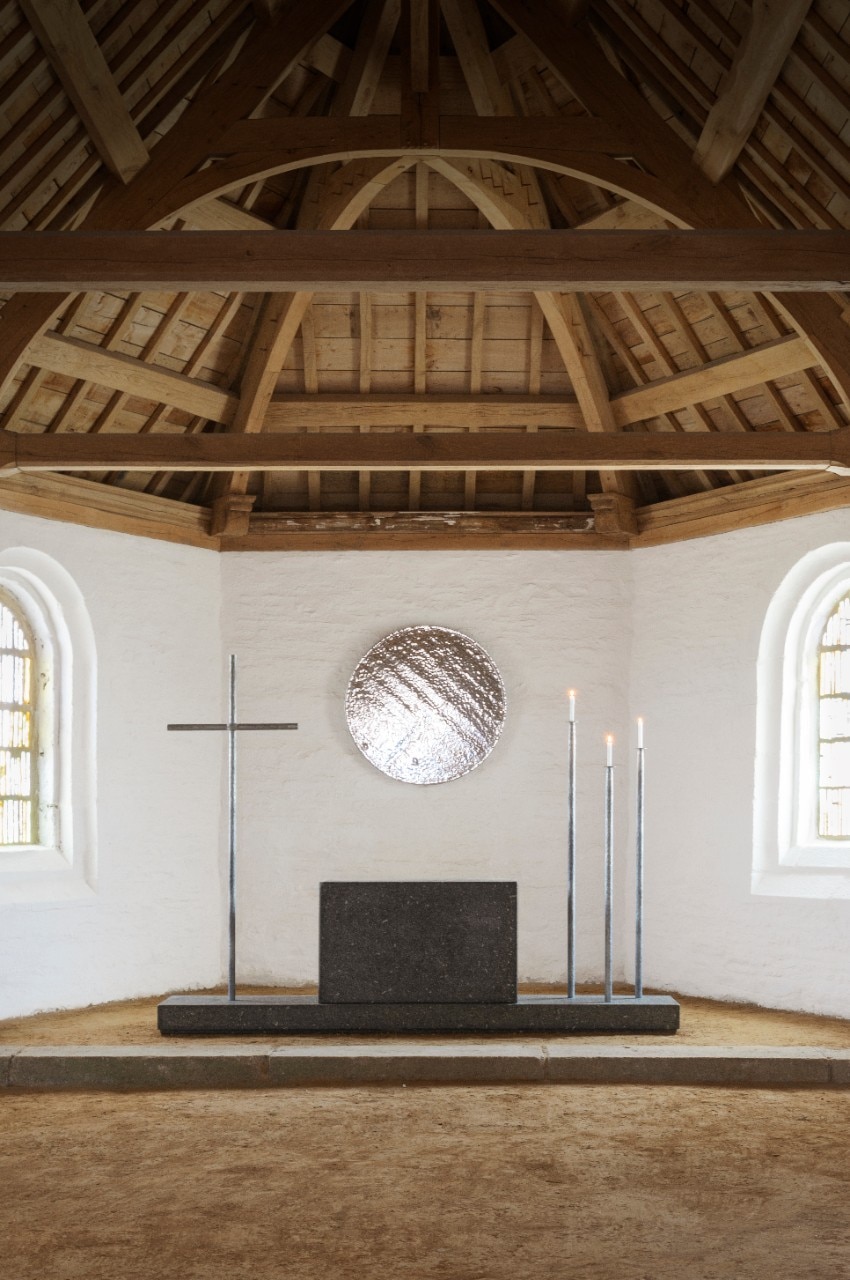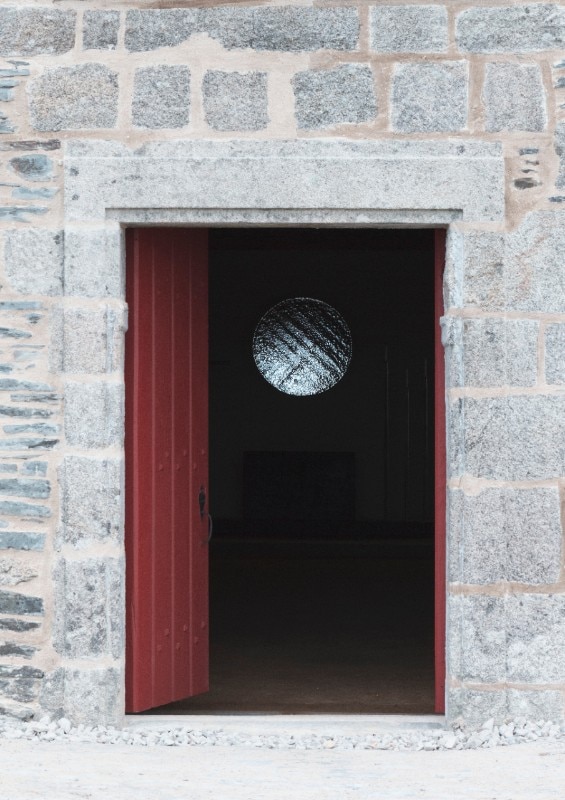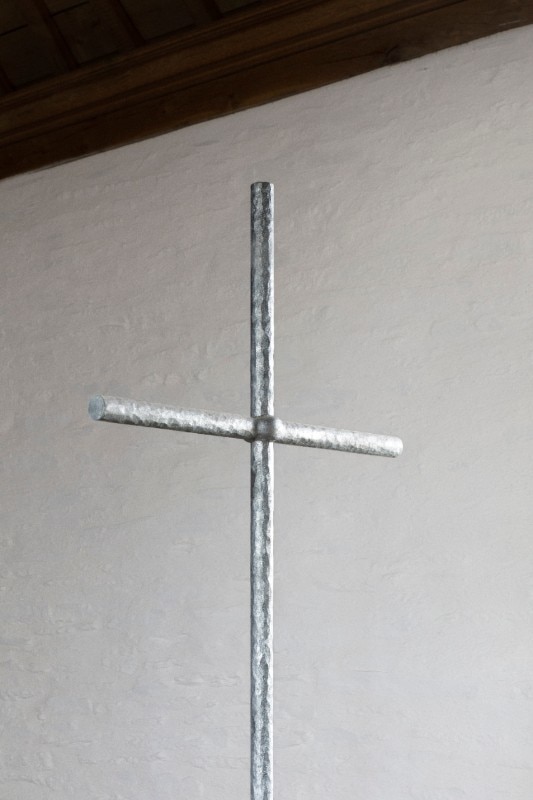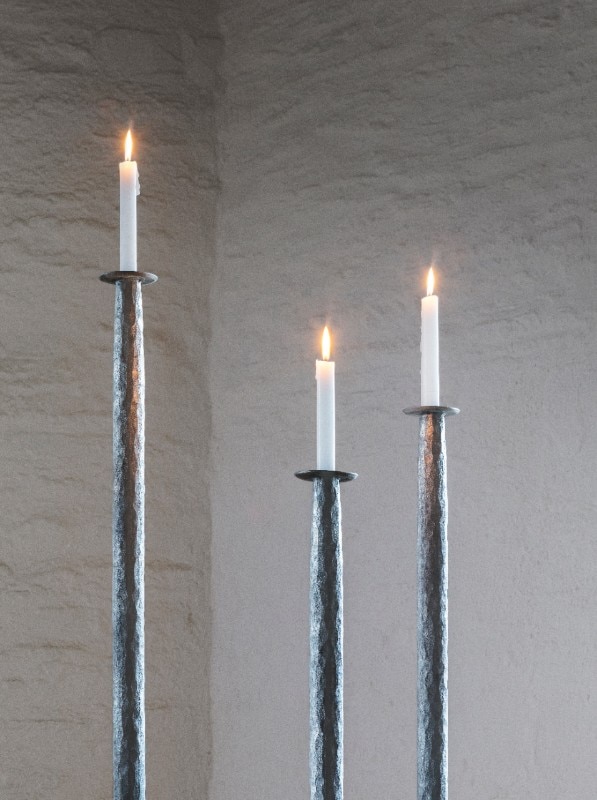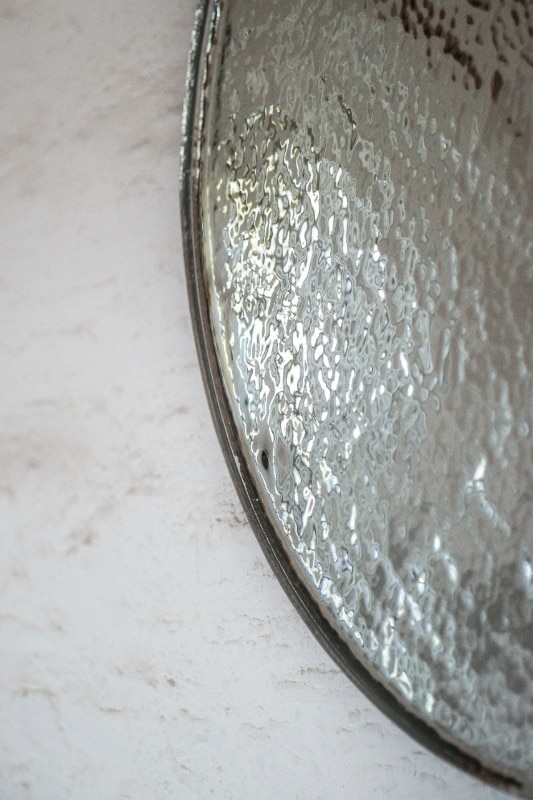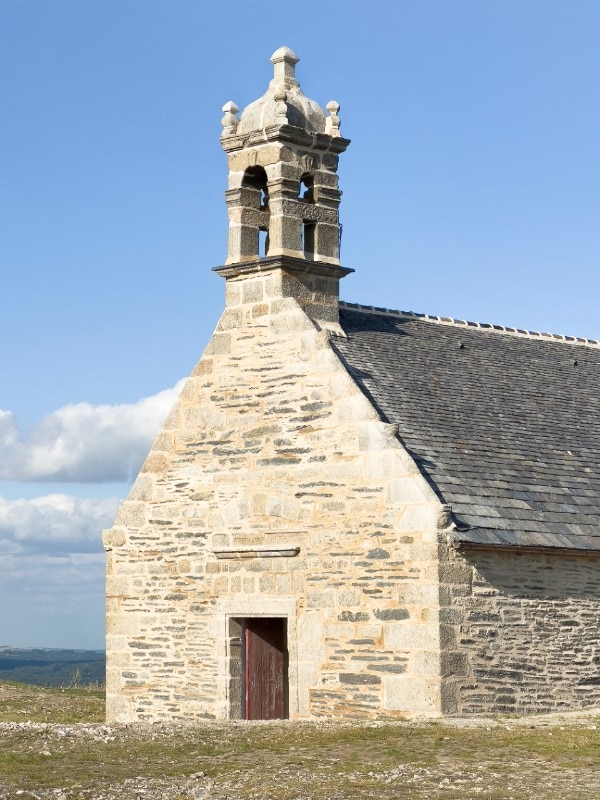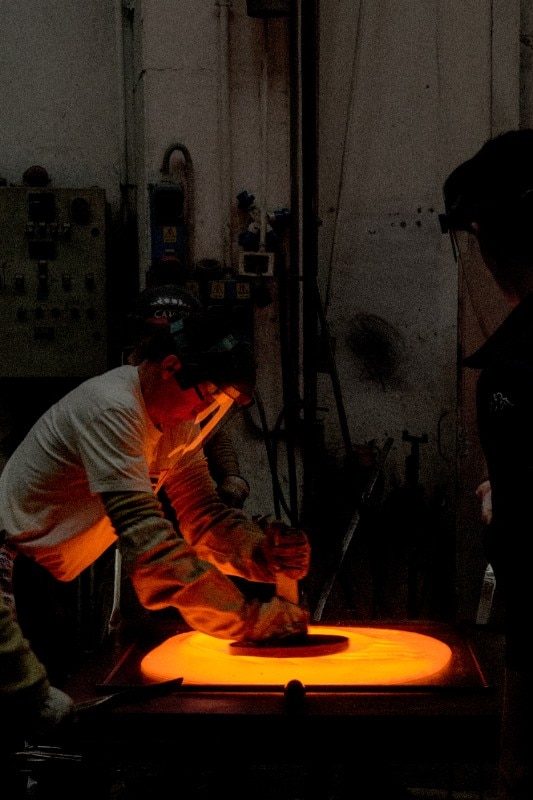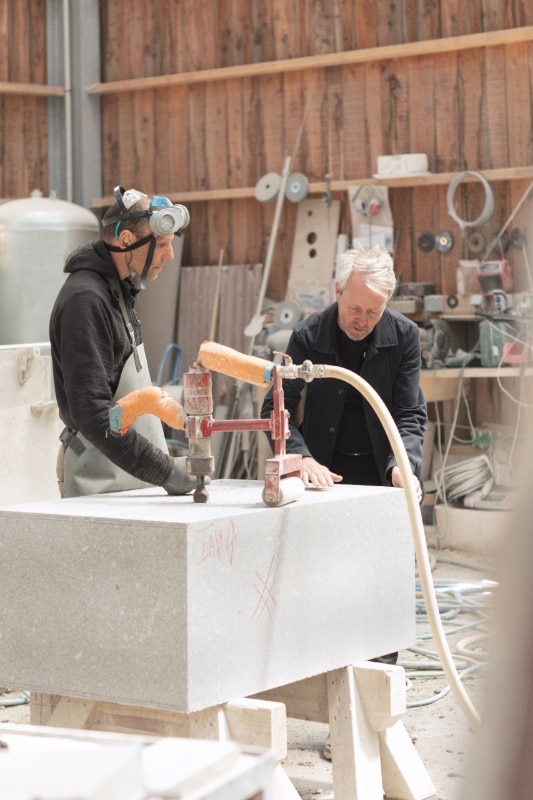This article was originally published on Domus 1088, March 2024.
As soon as you enter, you have the sensation of being in an intimate and secluded space. The silence, the restraint and the dim light immediately convey a feeling very close to the perception of the sacred. It is the Chapel of Mont Saint-Michel de Brasparts in Brittany. After the fires that devastated the Breton hills in July 2022, the chapel – built in the 17th century on a barren hilltop almost 400 metres high and fortunately spared by the fires – has been completely restored, with a new series of liturgical furnishings by one of France’s most famous designers, Ronan Bouroullec.
With a rectangular plan, the chapel has walls over a metre thick, a slate roof resting on an oakwood frame, a rammed-earth floor, and light shed only through the two windows of the apse, without electricity. The chapel remains open day and night so that passers-by, hikers and pilgrims can enter at any time and find refuge in this place of reflection and meditation. Bouroullec, with his brother Erwan, has been described by Andrea Branzi as one of the first, true protagonists of a new, weak and diffused modernity “that characterises the 21st century, less committed to finding definitive solutions and more attentive to working on environmental sub-systems”. Bouroullec chose to work on the chapel’s furnishings by preserving and enhancing the impression of coherence and extraordinary continuity between the architecture and its site, which is apparent to visitors at first glance.
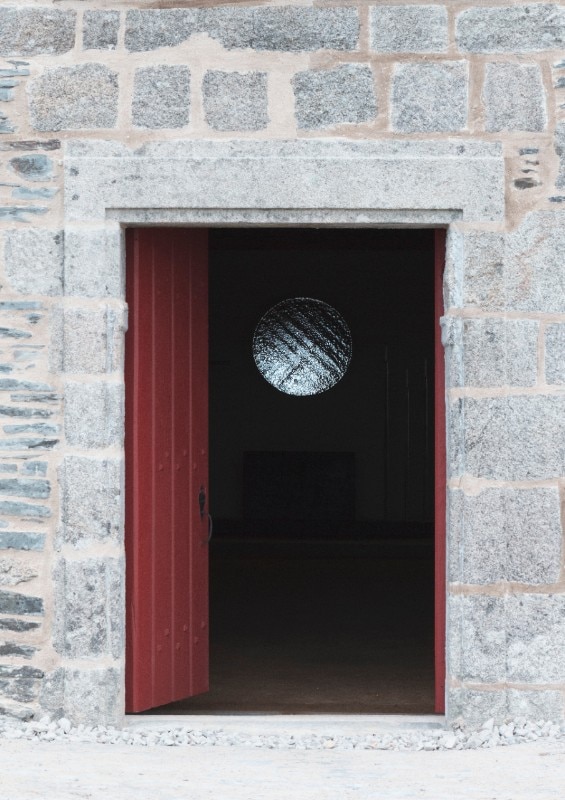
Aware that the new and the future can only be designed starting from a knowledge of history firmly rooted in the past, Bouroullec – who belongs to a France that is more provincial than Parisian – designed archetypal and essential elements: a console for votive objects, an altar with a base for holding a cross and candles, and a round mirror placed behind the altar. Essentially his designs were inspired by three guiding principles: the purity of the materials, the balance between mass and lightness, and a surface treatment that gives a voice and body to the “vibration” emanating from the place. All the materials he has chosen dialogue with the place in their own way. A block of dark granite flecked with white inclusions, and quarried less than 15 kilometres from the chapel, was used to make the altar, its base and the console with candles. The candlesticks in forged and hammered steel – a material that Bouroullec has been experimenting with for some time, while working with the Italian company Magis – were made by a Breton artist-blacksmith. Lastly, the glass of the mirror, although made by Venetian glassmakers, is part of a dialogue of refined evocations with the chapel’s stained glass windows, attributed to Breton master glassmaker Auguste Labouret.
The soul of things does not stem from the accuracy of their execution but from their way of relating to what is around them.
But Bouroullec also decided to work on balance by imparting lightness to the mass. Hence the relation between the weight of the mirror and its almost impalpable quality, or the paradoxical relationship between the mass of the granite block for the console and its virtual suspension on slender steel legs that extend into candleholders. On the level of “vibration”, Bouroullec then worked on all the surfaces (the granite is bush-hammered, the glass frosted, the steel hammered) to create an overall texture that skilfully combines roughness, strength and tremor, all immersed in simple light effects created by the windows, the flames of the candles and the light reflected in the mirror behind the altar.
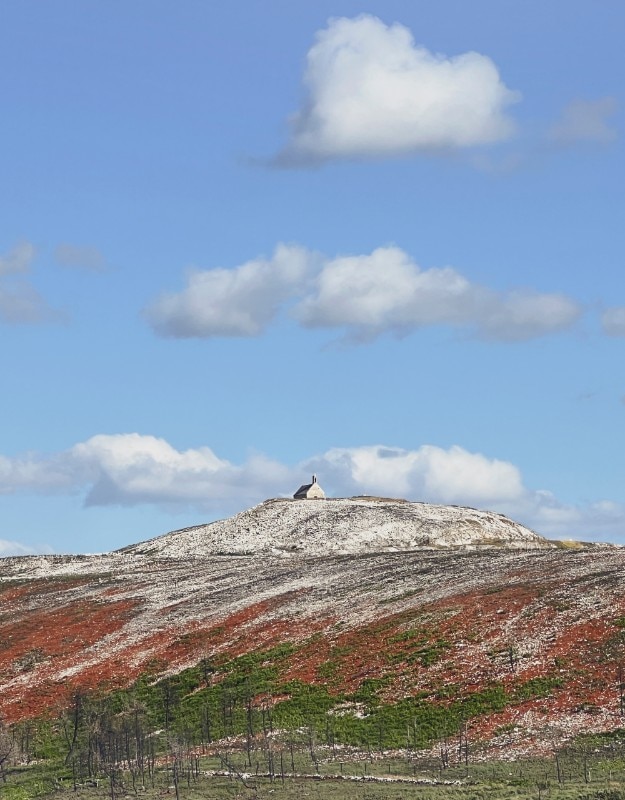
The feeling of contemplation is powerful in its purity. As Ronan says: “The soul of things does not stem from the accuracy of their execution but from their way of relating to what is around them.” His intervention in the Chapel of Mont Saint-Michel is a perfect expression of this philosophy. Which is also a vision of the world and a sense of life.
Opening image: the round glass panel echoes the two windows in the apse. A block of granite cut into three pieces forms the base of the altar and the console with candleholders. © Claire Lavabre – Studio Bouroullec

